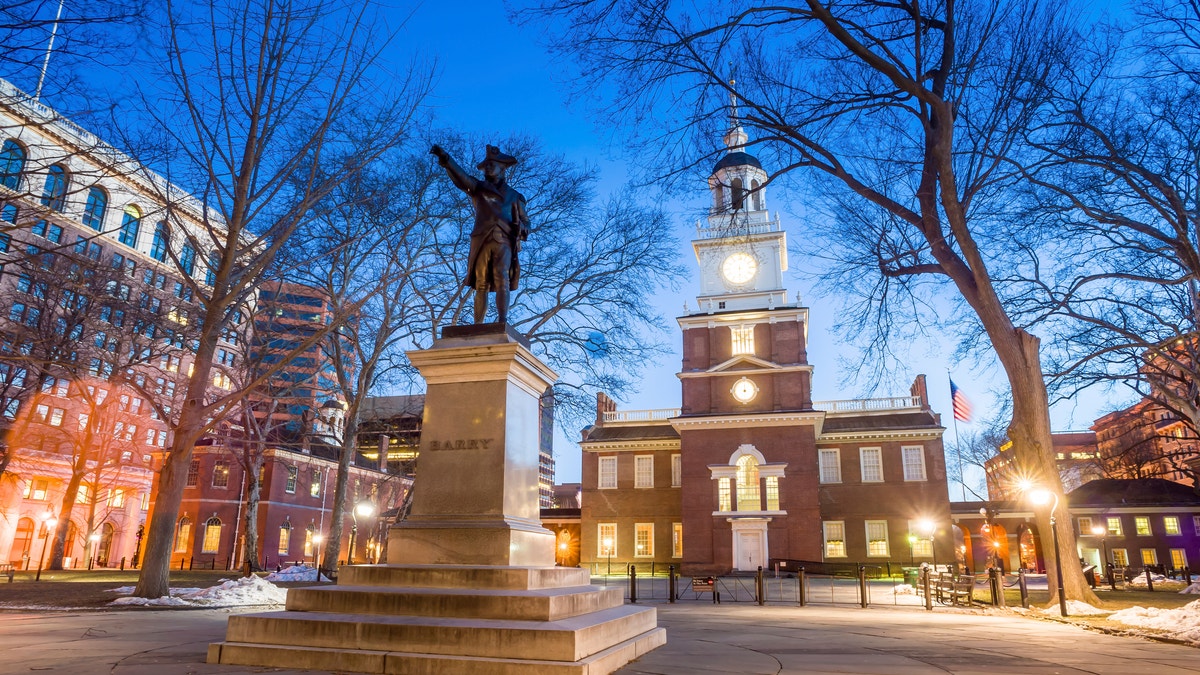
The city of Philadelphia and some of the interesting things to check out (iStock)
The Democratic National Convention is upon us and delegates from all over the U.S. have taken over Philadelphia.
Sure, it's one of the America's most stories cities with famous sites like the Liberty Bell and Independence Hall. But there's much more to see and do in this special city.
Got a little time to spare during those convention speeches? Stay a little longer, and check out these landmarks in the City of Brotherly Love.
1. Reenact a battle at Valley Forge National Park.
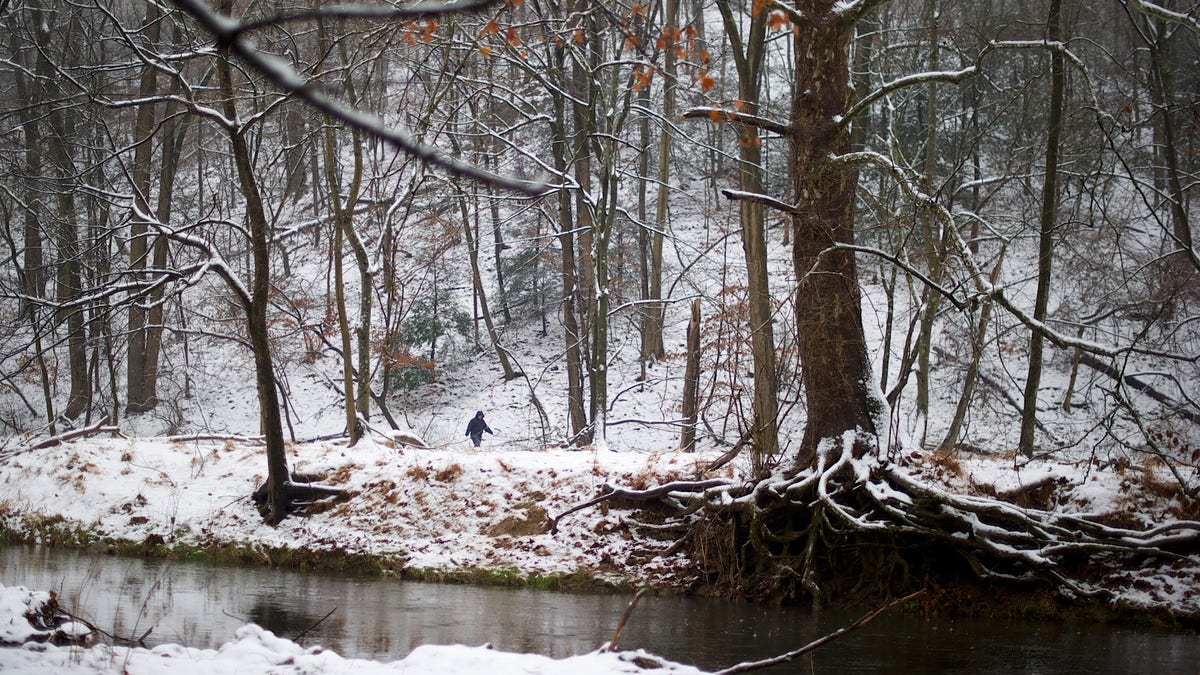
A pedestrian walks through snow in the Valley Forge National Park in Valley Forge, Pennsylvania on December 9, 2013. REUTERS/Mark Makela (UNITED STATES - Tags: ENVIRONMENT) - RTX16BIT (Reuters)
Valley Forge, the encampment headquarters of the Continental Army during the Revolutionary War, honors the sacrifices and strength of the patriots who fought to secure freedom.
Now a national park, the area is home to some of Philly's best scenery to take in while enjoying a walk through the many pathways.
Valley Forge offers guided tours, a variety of programming for history buffs of all ages, and even live, historic reenactments of the battles.
2. Get scientific at The Franklin Institute.

U.S. President Barack Obama (R) shakes hands with supporters after speaking at a campaign fund raising event at the Franklin Institute in Philadelphia, Pennsylvania June 12, 2012. In the background is a statue of U.S. founding father Benjamin Franklin. REUTERS/Kevin Lamarque (UNITED STATES - Tags: POLITICS) - RTR33IIA (Reuters)
The Franklin Institute is the nation's oldest science museum. Featuring a full city block of exhibitions like a walk-through giant model of the human heart, the museum also houses an 8,500-square-foot space to explore the brain.
Kids can explore the Space Command, SportsZone and the Nicholas and Athena Karabots Pavilion, a massive 53,000-square-foot area for permanent and traveling exhibitions. The museum also homes the Tuttleman IMAX Theater and a giant monument of founding father Benjamin Franklin.
With more than 800,000 visitors every year, the institute also holds the renowned Fels Planetarium.
3. It's time for some ye olde shopping.
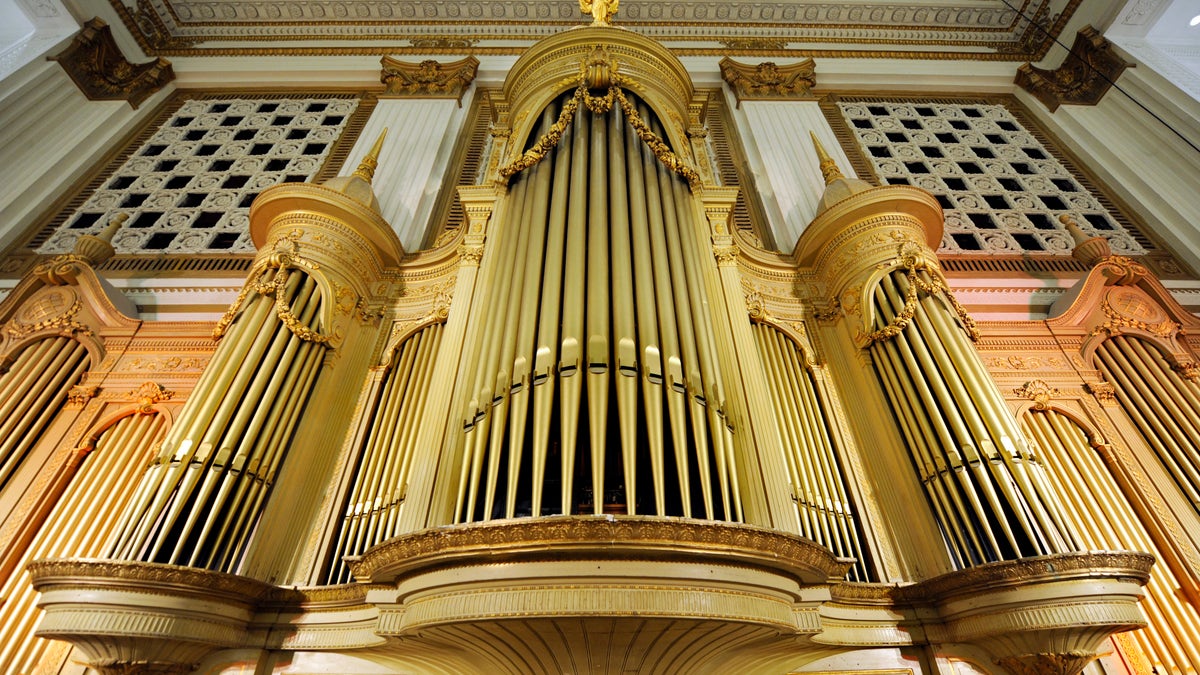
Played every business day since John Wanamaker opened his new department store in 1911, the world's largest playable pipe organ's golden facade of non-working pipes was designed by Chicago World's Fair and store architect Daniel H. Burnham and is located in what is now the Macy's Center City Store in Philadelphia, Pennsylvania, January 15, 2009. The organ, weighing 287 tons, with a 2.5 ton keydesk and with 28,482 pipes in numerous chambers rises up seven stories above the store's Grand Court, and has been designated a National Historic Landmark. REUTERS/Ray Stubblebine (UNITED STATES SOCIETY BUSINESS ENTERTAINMENT) - RTR25QZP (Reuters)
The country's first department store, the Wanamaker Building, founded by John Wanamaker, is also in Philadelphia. Wanamaker pioneered a new shopping experience that would not only sell menswear but also dry goods and women's clothing in one giant store.
Inspired by the London's Royal Exchange and Paris' Les Halles, the department store, which was founded in 1877, was the first to use price tags, popularizing the concept of set prices. Among other firsts? It was the first store to have electric lighting, and the first to use a pneumatic tube system for transporting cash and documents.
The building also features the world's largest operating musical instrument, the Wanamaker Organ, formerly the St. Louis World's Fair pipe organ.
After browsing the shops-- and spending a pretty penny-- take in a historic tour of the site. And don't forget one of Wanamaker's most famous sayings, "the customer is always right."
4. Love medicine? Check into this museum.
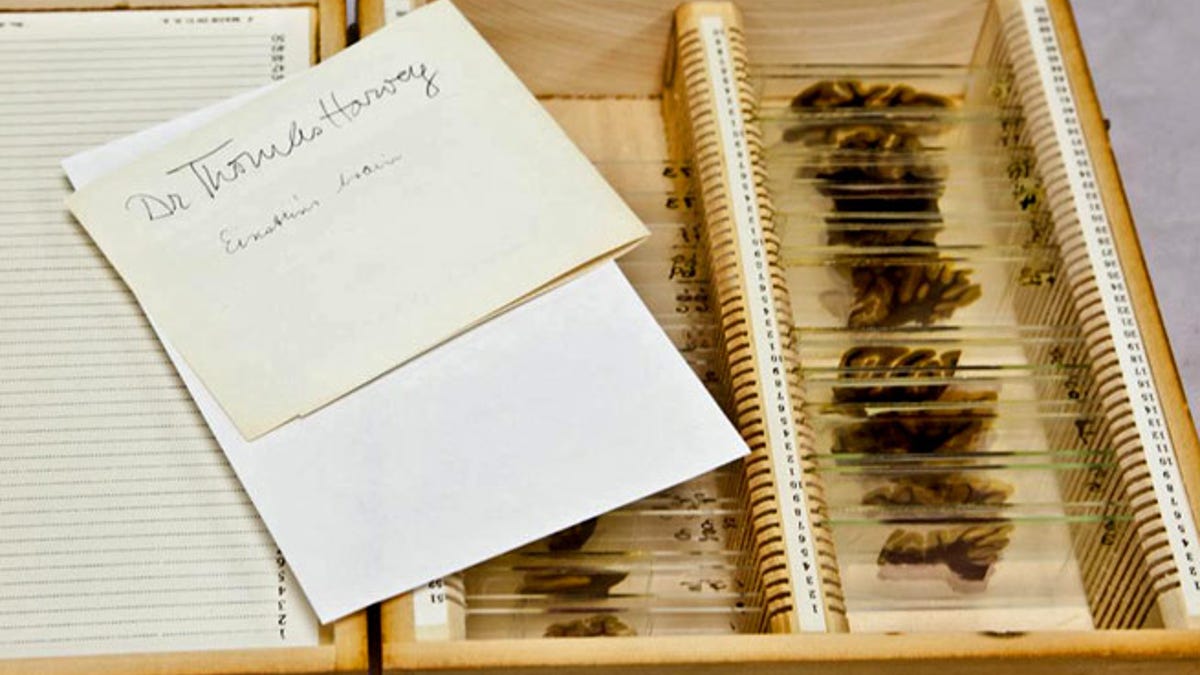
("The Brain of Albert Einstein Evi Numen, 2011, for the M��tter Museum of The College of Physicians of Philadelphia")
Located in the College of Physicians of Philadelphia, the Mutter Museum houses some of the world's best exhibits dedicated to medical advancements and oddities.
Displays of skulls, skeletons, brains, and other body parts may send chills down your spine-- but it's impossible to leave this museum without learning more about how the body functions. Permanent exhibits include a skeleton of the tallest man in North America and the fused bones of Harry Eastlack, who died of Fibrodysplasia Ossificans Progressiva, a disorder in which the soft connective tissue of the body ossifies, painfully freezing the body in an immobile state.
The museum, which opened in 1858, also includes several brains of some of the biggest personalities in history, like the brain of the twentieth century’s most famous scientist: Albert Einstein.
5. They don't call it the City of Brotherly Love for nothing.
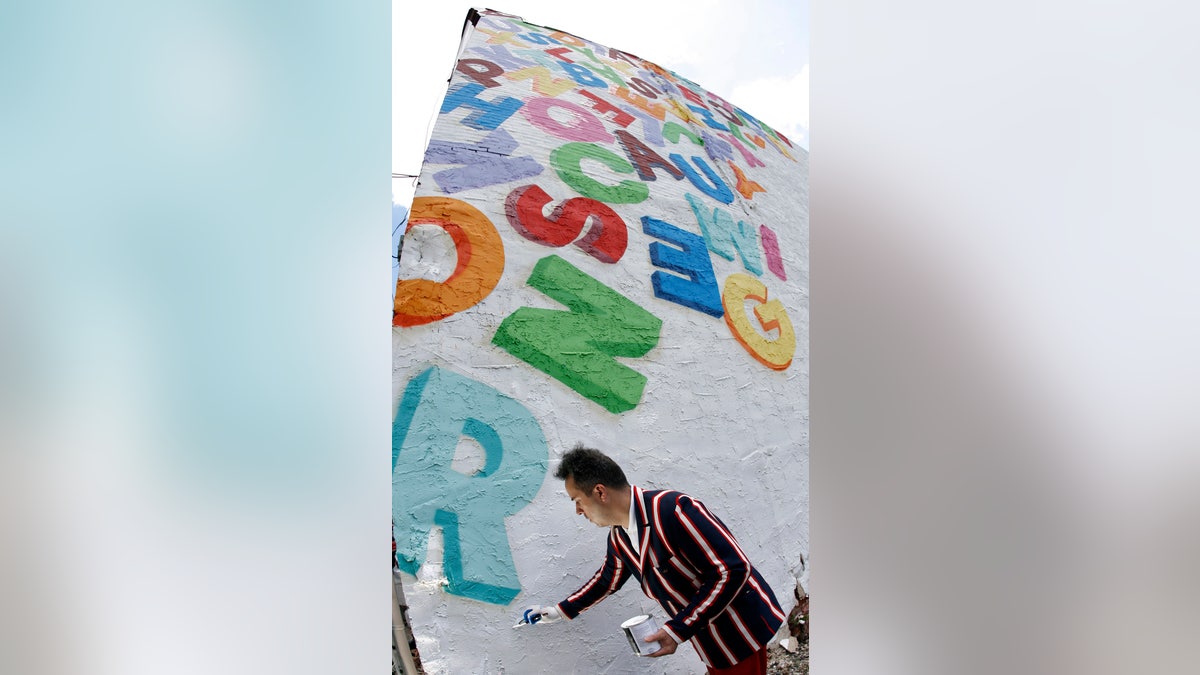
Artist Stephen Powers touches up a mural which is part of the "Love Letters " 50 mural project in Philadelphia, Pennsylvania, July 8, 2009. On the side of a West Philadelphia barber shop, a painted jumble of multicolored letters and a few words mark the start of a massive mural project to celebrate community in one of the city's poorest neighborhoods. REUTERS/Tim Shaffer (UNITED STATES SOCIETY ENTERTAINMENT) - RTR25I0S (Reuters)
A series of 50 rooftop murals, "Love Letter" can be viewed from the elevated train platform of the Market-Frankford line in West Philadelphia.
A collaboration between Philadelphia Mural Arts Program and New York City-based artist Stephen Powers (also known as ESPO), the murals have display expressions of love between two people, an artist and his hometown, and local residents for their beloved city of Philly.
The walls are adorned with sayings like "Sign on our Lifetime," and "This Must Be The Place." Explore the artwork on your own, with a loved one-- or through a regularly scheduled guided tour.
